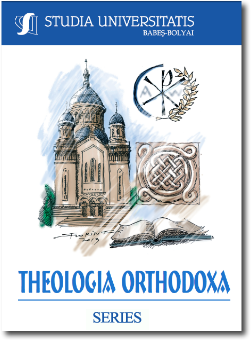REVIEWS-ALEXANDRU PRELIPCEAN, ROMANOS’ RENAISSANCE. FROM THE BEGINNING TO THE PRESENT: BIBLIOGRAPHY ABOUT ROMANOS THE MELODIST, IN COL. STUDIEN ZUR ORIENTALISCHEN KIRCHENGESCHICHTE (VOL. 61), EDITED BY MARTIN TAMCKE, LIT VERLAG, ZÜRICH, 2019, 82 P
REVIEWS-ALEXANDRU PRELIPCEAN, ROMANOS’ RENAISSANCE. FROM THE BEGINNING TO THE PRESENT: BIBLIOGRAPHY ABOUT ROMANOS THE MELODIST, IN COL. STUDIEN ZUR ORIENTALISCHEN KIRCHENGESCHICHTE (VOL. 61), EDITED BY MARTIN TAMCKE, LIT VERLAG, ZÜRICH, 2019, 82 P
Author(s): Dragoş BoicuSubject(s): Book-Review
Published by: Studia Universitatis Babes-Bolyai
Summary/Abstract: Among the latest contributions published in the collection Studien zur Orientalischen Kirchengeschichte at the prestigious Lit Verlag, this summer appeared the volume Romanos’ Renaissance. From the beginning to the present: Bibliography about Romanos the Melodist, prepared by Alexandru Prelipcean and edited by Prof. Dr. Dr.h.c. Martin Tamcke. In his “Preface”, the illustrious professor from “Georg-August” University of Göttingen underlines the genuine interest of the Lutheran theologians in Romanos the Melodist, as shown by the article written by Christian Ludwig Philipp Meyer in the third edition of the “Realencyklopädie für protestantische Theologie und Kirche” (1906). Christian Ludwig Philipp Meyer was clearly very keen to broaden the Protestants’ understanding of Orthodoxy and his appreciation of Romanos’ work is an indicative of how highly regarded was the Melodist, “that complying with Meyer’s standards inevitably elevated him to a father of theology and piety as well”. Paradoxically the Orthodox theologians “presumably denied such views or treated them with scepticism and thus the debate surrounding the message of the text intensified and still influences current practice” (p. 8). Expressing his interest in the sources of the orthodox Tradition, Professor Martin Tamcke points out that the research conducted by Alexandru Prelipcean is another necessary step in the exploration of early ecclesiastical sources and their lasting impact.
Journal: Studia Universitatis Babes-Bolyai - Theologia Orthodoxa
- Issue Year: LXIV/2019
- Issue No: 2
- Page Range: 115-116
- Page Count: 2
- Language: English

